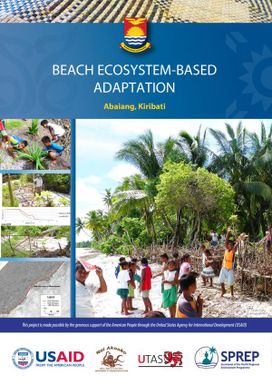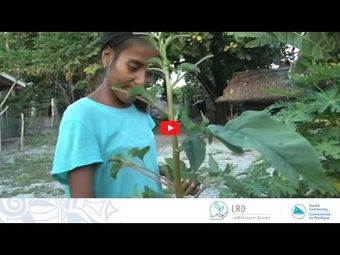Beach Ecosystem-Based Adaptation: Abaiang, Kiribati
- Description:
- The erosion of beaches is prevalent on Paci|c island coastlines, partly due to human causes. On Abaiang in Kiribati, many beaches have been reported as eroding, and coastal protection structures such as seawalls are expensive and can cause negative impacts. Beach ecosystem based adaptation (EbA) can increase resilience of beaches to storms and sea level rise, using access control fencing and gateways, beach vegetation replanting and use of brush matting to protect beach erosion scarps from direct wave action. This project applied EbA methods at seven eroding beaches on Abaiang, all located on community land, in demonstrations involving all of the ten villages on the main island.
- Display date:
- 2016
- Collections:
- Secretariat of the Pacific Regional Environment Programme (SPREP)
- Publisher:
- Secretariat of the Pacific Regional Environment Programme (SPREP)
- Content partner:
- Secretariat of the Pacific Regional Environment Programme (SPREP)
- Availability:
- Not specified
-
Copyright status: All rights reservedFind out more about what you are able to do with this itemThis item is all rights reserved, with means you'll have to get permission from Secretariat of the Pacific Regional Environment Programme (SPREP) before using it. For more information, please see our use and reuse page.What can I do with this item?Non-infringing useNZ copyright law does not prevent every use of a copyright work, and this item may be hosted by an international institute or organisation. You should consider what you can and cannot do with a copyright work.No sharingYou may not copy and/or share this item with others without further permission. This includes posting it on your blog, using it in a presentation, or any other public use.No modifyingYou are not allowed to adapt or remix this item into any other works.No commercial useYou may not use this item commercially.
Related items
Welcome and warm Pasifik greetings
The information on this site has been gathered from our content partners.
The names, terms, and labels that we present on the site may contain images or voices of deceased persons and may also reflect the bias, norms, and perspective of the period of time in which they were created. We accept that these may not be appropriate today.
If you have any concerns or questions about an item, please contact us.

